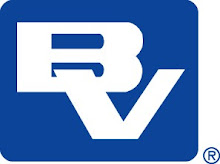
Knostrop is the main Waste Water treatment Works serving the city of Leeds and the scheme is valued at circa £10m and programmed for completion over an 18 month period ending June 2008.
The scheme is to design and build a new sludge management and odour control process including associated new structures to provide sludge storage, sludge thickening facilities and all the necessary activities to fully integrate the new process into the existing operations on site.
During the initial excavation stages of the scheme, unforeseen previously buried demolition waste was discovered comprising large concrete slabs and brickwork to a total quantity of circa 30,000 cu metres. It was a requirement of the design that all demolition waste discovered would be removed and replaced with suitable engineering fill.
A decision was made by the site management team to bring a licensed mobile concrete crusher on to site to crush the discovered demolition material. This produced approximately 20,000 cu metres of graded fill material suitable as backfill for the new sludge storage tank facility that was being constructed. The crusher waste product was of a very fine grading and used for landscaping around new works (10,000 cu metres).
There was still a shortfall of suitable backfill material needed for the new structures so rather than source new "virgin" aggregates it was decided to try to source some local and suitable recycled material. Enquiries led to two likely sources from:
- Another contractor on the Knostrop site who was producing surplus material (concrete and masonry) from their capital works (1000 cu m)
- From an approved Waste Transfer Station situated in the immediate vacinity of the works who was also B&V's appointed waste contractor for the scheme (3000 cu m).
It was necessary to have the material from both these sources suitably processed/ crushed and graded to the specified quality. Furthermore in order to be allowed the import of this material to the B&V site it was necessary to obtain the Environment Agency approval for a Waste Management Regulations 1994 Exemption (schedule 3, paragraph 19a - "arisings from demolition or construction work... suitable for use for purposes of relevant work.."). This approval was successfully obtained prior to imports commencing.
Any additional material used on the project was a recycled demolition waste graded fill sourced from a local supplier therefore all backfill used on the scheme was provided either from reuse of exisiting material on site or from locally imported recycled material after suitable processing.
- John Thornton



